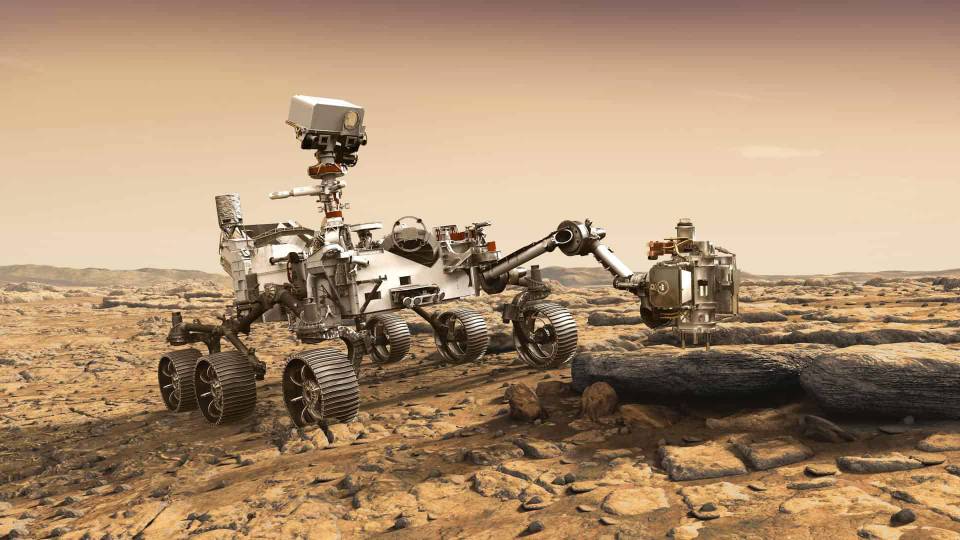NASA Curiosity Rover Unearths Building Blocks in 3-Billion-Year-Old Organic Matter on Mars
The "building blocks" for life have been discovered in 3-billion-year-old organic matter on Mars, NASA scientists announced Thursday.
Researchers cannot yet say whether their discovery stems from life or a more mundane geological process. However, “we’re in a really good position to move forward looking for signs of life," said Jennifer Eigenbrode, a NASA biogeochemist and lead author of a study published Thursday in the peer-reviewed journal Science.
The findings were also remarkable in that they showed that organic material can be preserved for billions of years on the harsh Martian surface.
The material was discovered by the Mars Curiosity rover, which has been collecting data on the Red Planet since August 2012. The organic molecules were found in Gale Crater — believed to once contain a shallow lake the size of Florida's Lake Okeechobee.
For the past six years, "the Curiosity has sifted samples of soil and ground-up rock for signs of organic molecules — the complex carbon chains that on Earth form the building blocks of life, according to Science. "Past detections have been so faint that they could be just contamination," the journal said.
Now, samples taken from two different drill sites on an ancient lake bed have yielded complex organic molecules that look strikingly similar to the goopy fossilized building blocks of oil and gas on Earth.
The rover also discovered traces of methane in the Martian atmosphere, which was reported in a second paper in Science. This is significant because most methane on Earth, for instance, comes from biological sources.
"The detection of organic molecules and methane on Mars has far-ranging implications in light of potential past life on Mars," said Inge Loes ten Kate, a Utrecht University scientist in an accompanying article in Science. "Curiosity has shown that Gale Crater was habitable around 3.5 billion years ago, with conditions comparable to those on the early Earth, where life evolved around that time.
"The question of whether life might have originated or existed on Mars is a lot more opportune now that we know that organic molecules were present on its surface at that time," Kate said.
NASA's Thomas Zurbuchen said that "with these new findings, Mars is telling us to stay the course and keep searching for evidence of life. I’m confident that our ongoing and planned missions will unlock even more breathtaking discoveries on the Red Planet.”
The nuclear-battery-powered Curiosity rover, a $2.5 billion mobile chemistry lab, launched in 2011. NASA calls Curiosity the "largest and most capable" rover ever to make contact with Mars.
It's about the size of a car, has a 7-foot-long arm and carries 10 science instruments, 17 cameras and a laser to "vaporize" rocks.






















